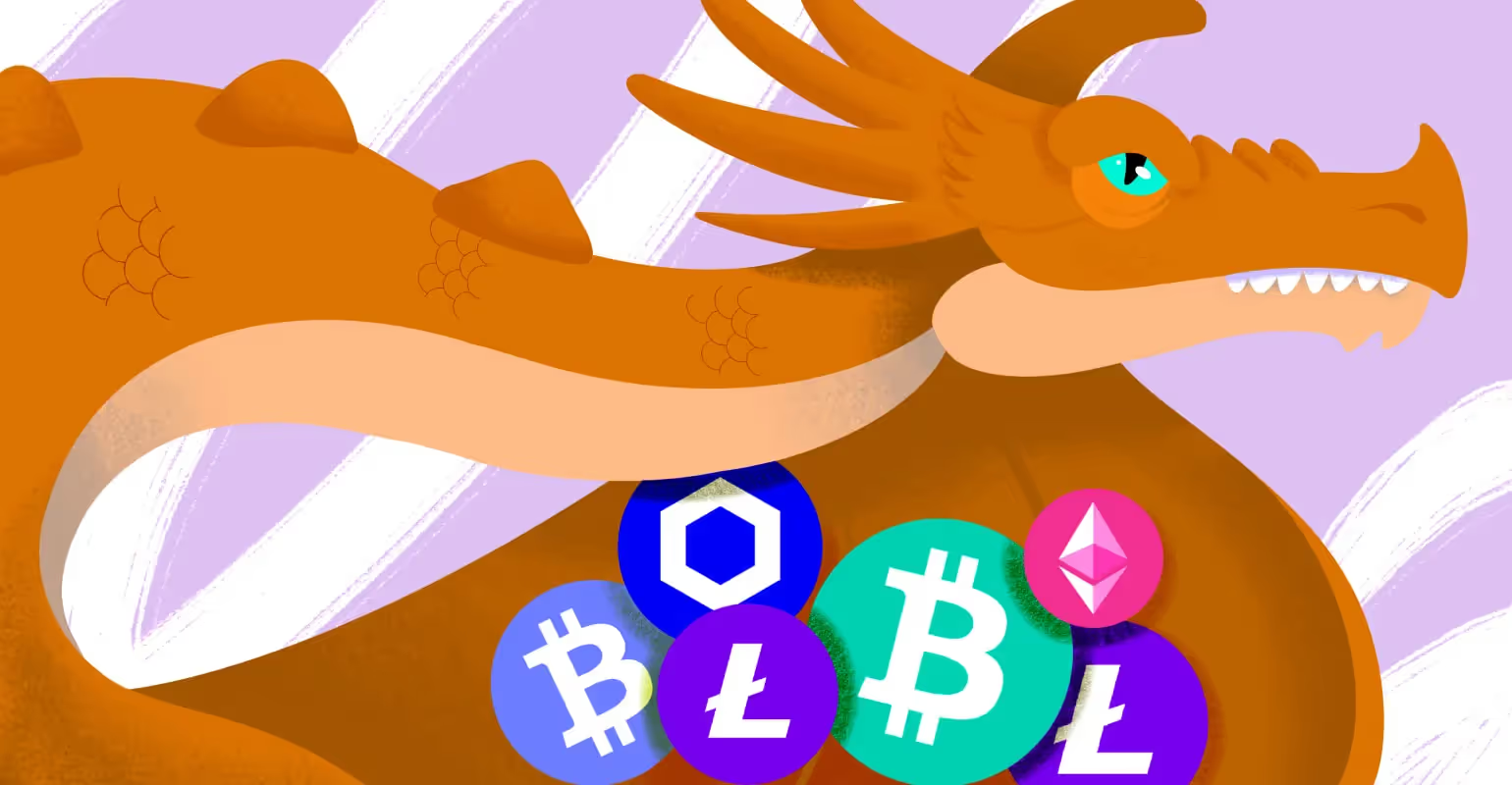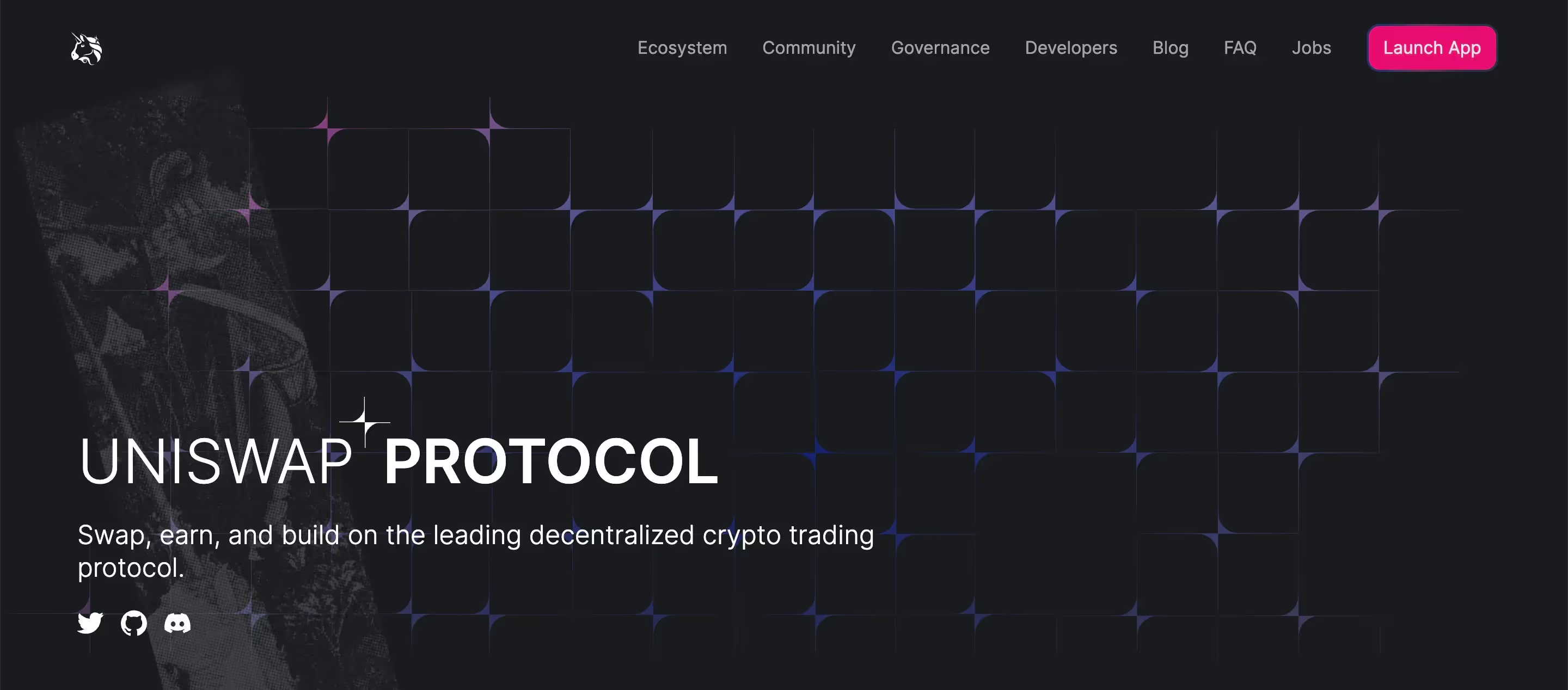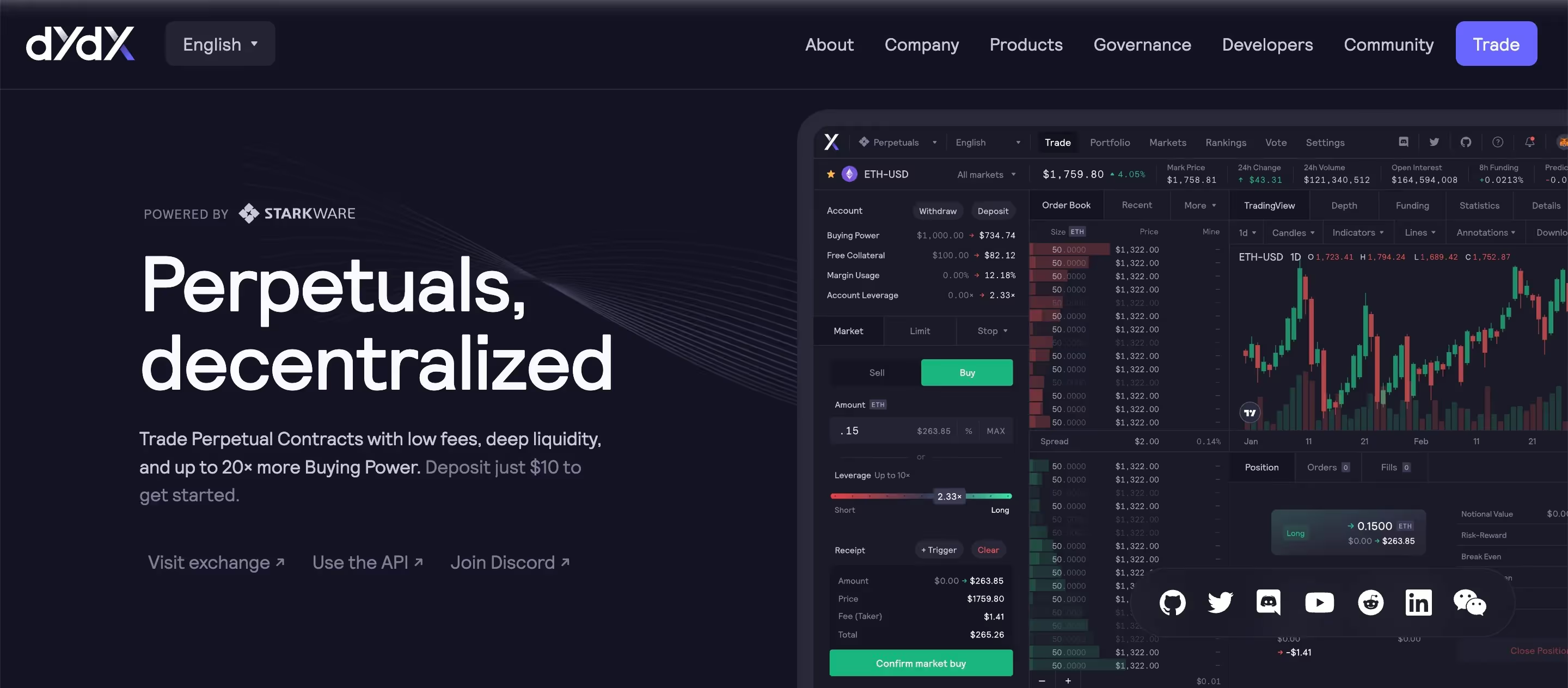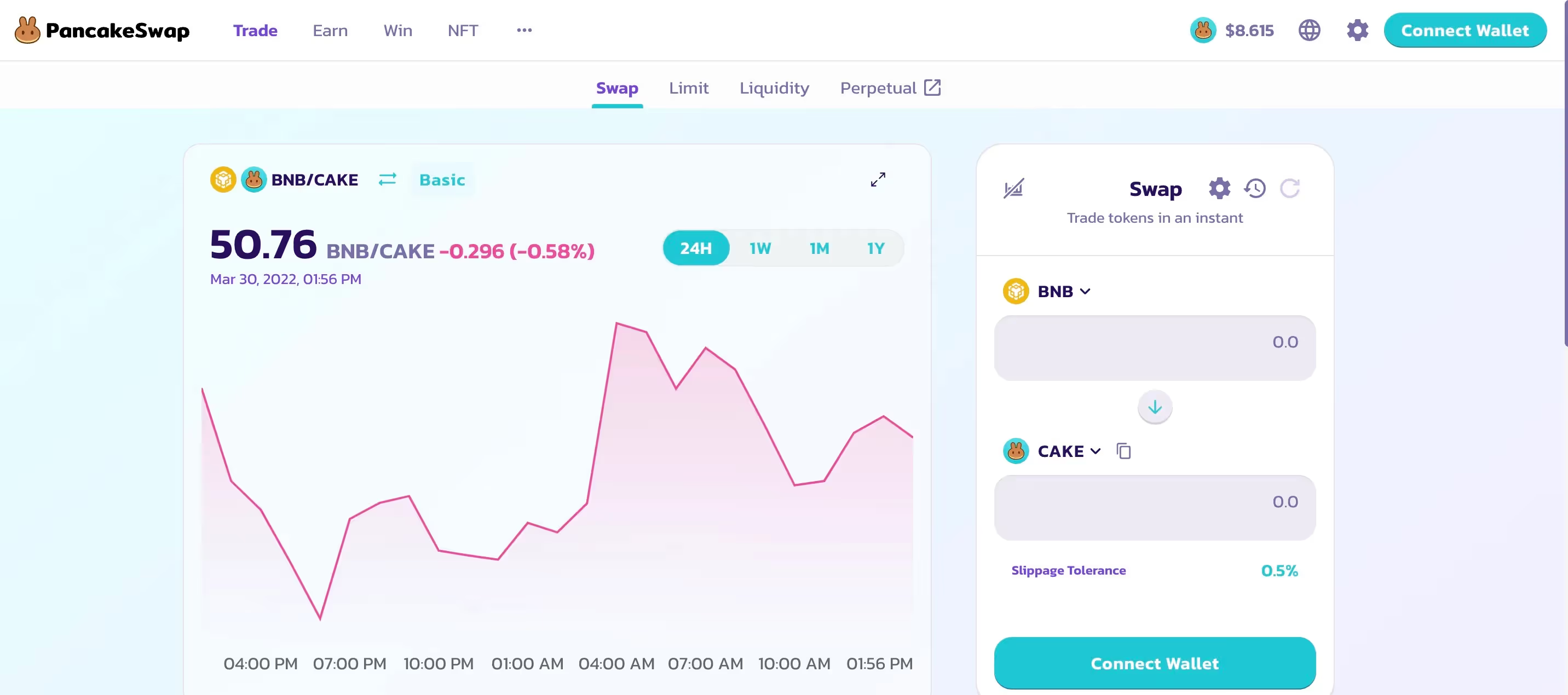If you are ready to enhance your web design with expert solutions, let’s talk!
The cryptocurrency market is evolving rapidly. The constant emergence of new trends and technologies drives this growth, while promising business perspectives shape the future of crypto-related digital products. More and more users are getting involved in crypto, and, accordingly, need a reliable, secure, and transparent trading environment.
Not surprisingly, decentralized cryptocurrency exchanges are attracting much attention. Many find the DEX model more reliable than the centralized one. Why? It’s anonymous, secure, and independent. Decentralized exchanges reported more than $1.76 trillion in trading volumes.
So, what is a decentralized crypto exchange, and how to build one from scratch?
Drawing on the Arounda team’s rich experience working on crypto-related projects, this post will explain the key aspects of creating decentralized exchanges. You will learn the key DEX specifics, benefits, and the necessary steps to create such a product.

What does Decentralized Exchange Mean?
A decentralized exchange (DEX) is a crypto-exchange platform that allows buying and selling Bitcoin, Ethereum, and other cryptocurrencies within a peer-to-peer transaction model. The users can trade crypto without third-party involvement. So such a system is more resistant to hacker attacks. Accordingly, DEX is considered more secure and reliable than the centralized exchange model (CEX) that involves intermediaries.
Unlike centralized systems, decentralized exchanges don’t store users' funds inside the system. Each transaction is under the complete control of its direct parties. The blockchain architecture includes smart contracts that manage transactions, wallets, and individual keys.
Due to its anonymity, transparency, and robust security approaches, DEX is constantly evolving and becoming a promising alternative to popular centralized systems like Binance and Coinbase. Despite certain drawbacks of decentralized systems like lack of liquidity and unavailability of fiat currencies, they have great prospects for growing popularity.
Examples of Decentralized Exchange Platforms
Now, let’s look at several top-rated decentralized Bitcoin exchange platforms.
Uniswap
Uniswap is the leading decentralized crypto-exchange protocol. It’s based on the Ethereum blockchain architecture and uses smart contracts to conduct transactions between crypto tokens. Also, its open-source software allows creating new exchanges on its basis.

dYdX
dYdX is a powerful and professional decentralized crypto platform that provides perpetual trading. The system offers a feature-rich test environment, a collection of unique NFTs, and other powerful products.

PancakeSwap
Pancake Swap is one of the largest DEX systems with millions of users worldwide. The traders can complete transactions by connecting their wallets to the system without registration. It also enables playing games, trading NFTs, and earning with farms or pools.

Serum DEX
Serum DEX is a fast and secure decentralized exchange platform. It offers an extensive ecosystem allowing multiple options for traders and developers. In particular, the platform includes a large list of available tokens and coins.

How to Create a Decentralized Exchange Platform
When creating a DEX system, consider that decentralized exchange platforms are built within the blockchain architecture and have a specific structure. So you should find a team with relevant expertise and skills to meet such project requirements.
We at Arounda have worked with crypto-related products of different complexity. The following guide on creating a decentralized exchange is based on our team’s experience and will provide you with some useful insights.
Research Phase
This initial stage of crypto exchange development is crucial as it helps to define the project goals and requirements. Depending on your project’s specifics, you might need to conduct user research, A/B testing, user interviews, etc. For an efficient outcome, it’s worth collecting information about the market, its big players, common challenges, and the audience’s needs.
The key objective of this phase is to come out with a clear idea of the future platform. You should find a way to address potential challenges, prioritize the main goals, and define the project’s milestones.
Listing the Required Features
Not only the structure distinguishes a decentralized system from a centralized one. When building a DEX platform, pay special attention to the required features and complexity. It will significantly affect the project’s cost and timeline.
Here are the most typical features a common decentralized exchange should include:
- Trading engine
- Order book
- History of transactions
- Analytical tools
- AMM integration
- Crypto wallet integration
- Flexible payment system
- NFT marketplace, etc.
UI/UX Design
Your cryptocurrency platform should be easy to use and accessible for a wide audience of users. UI/UX solutions have a critical impact on how well your users interact with the system.
For decentralized exchanges, user experience is a common challenge. Such systems often lack intuitiveness and clarity. However, the fast-growing decentralized exchange market has worked hard to overcome this issue.
Good onboarding and a convenient support system will help you address the UX issue. Although DEX systems are more complex than CEX in certain aspects, you can explain how certain functions work and provide users with clear navigation.
CEX Platform Development
Cryptocurrency exchange platform development is the key stage of the project. It’s extremely important to choose the right tech stack to ensure the system’s reliability, security, and stability. The engineering team should implement all required features, keep consistent documentation, and regularly test software.
Also, the team should optimize the product’s structure, ensuring that its trading engine, protocols, and aggregation tools work properly. You may also have to turn to APIs to provide your platform with the necessary third-party integration.
Benefits of DEXs
Decentralized cryptocurrency exchanges are constantly evolving and attracting more and more traders. Here are the key benefits of DEX platforms compared to other crypto exchange models.
High-level Security
As mentioned above, decentralized exchange systems are more secure than centralized ones since the users’ funds are not stored in online wallets within the crypto platform. The users get more independence when conducting transactions. Also, it significantly reduces the risks of hacks and breaches.
Transactions’ Transparency
Blockchain systems allow the users to track all transactions and their statuses. It makes every transaction transparent and available to the public.
Complete Anonymity
Unlike centralized exchanges, DEX platforms don’t require the customers to provide their personal information to perform any transaction. Thus, a decentralized crypto exchange system is much more convenient for those who want to remain anonymous. When using DEX, users can avoid passing a common identification process that includes sharing their full name, personal ID details, etc.
Unlimited Number of Tokens
Centralized cryptocurrency exchange apps have strict limits on the available tokens and coins. A CEX platform should follow numerous regulations and include only legalized tokens. Meanwhile, DEX platforms have no limits and may include any tokens as soon as they appear on the blockchain.
No Intermediaries
Instead of using third-party services, decentralized platforms are based on smart contracts. It means that no intermediaries are involved in the transaction process. Thus, the counterparty risks are minimized, and the direct exchange participants have complete control over each transaction.
Build Your Robust DEX Platform with Arounda
Developing a well-functioning decentralized cryptocurrency platform requires solid expertise in blockchain systems and other crypto-related solutions. You should consider the crypto market’s specifics, target audience’s needs and be particularly careful about the platform’s security aspects.
Therefore, you can solve the potential challenges related to the system’s liquidity and the app’s usability with a professional approach to the design and development process.
Looking for a team of specialists in building digital products related to cryptocurrency? We at Arounda have extensive experience in full-cycle software development, from conducting comprehensive business analysis and research to UI/UX design, front-end and back-end engineering, and more.
Get in touch, our experts are ready to help you find the answers you need!














